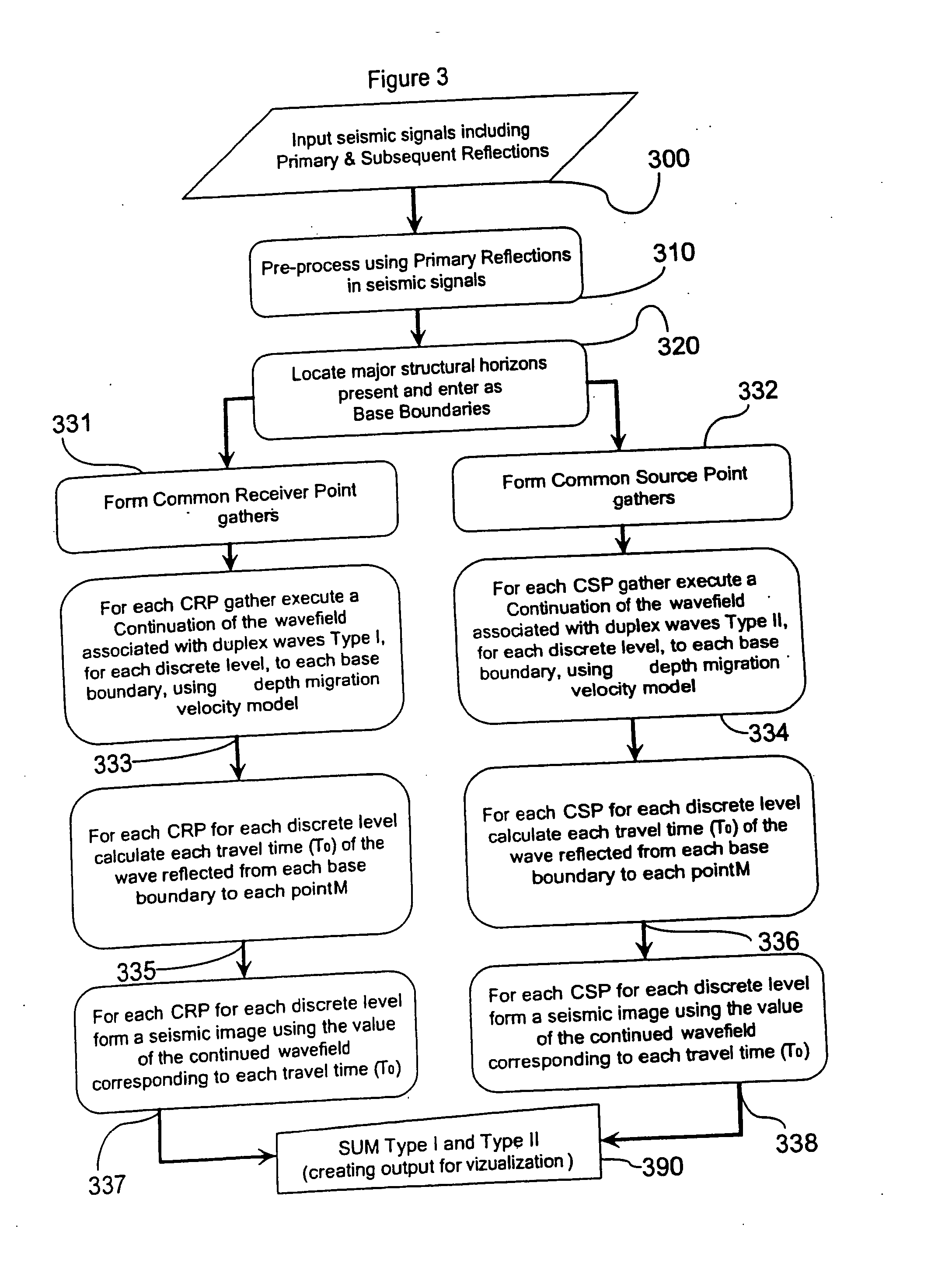Method, system and apparatus for interpreting seismic data using duplex waves
a seismic data and duplex wave technology, applied in seismology for waterlogging, instruments, and using reradiation, can solve problems such as the size of an observation surface, and achieve the effect of reducing the effect of any noise and clear imag
- Summary
- Abstract
- Description
- Claims
- Application Information
AI Technical Summary
Benefits of technology
Problems solved by technology
Method used
Image
Examples
Embodiment Construction
[0037] Reference is to be had to FIGS. 1-11 in which identical reference numbers identify similar elements.
[0038] According to the invention, in one of its broad embodiments, there is provided a novel method for using non-primary reflections to accurately identify and characterize steeply dipping sub-vertical events. According to a preferred embodiment of the method of the invention, secondary reflections or duplex waves are migrated while the effects of primary reflections are suppressed. Duplex wave migration uses two types of duplex waves that differ by their direction of propagation. Waves of the first type reflect first from a sub-vertical and then from a sub-horizontal boundary. The second wave type reflects from a sub-horizontal and then a sub-vertical event, before reaching the surface. In duplex wave migration, the main energy contribution is made by waves with large angles of incidence.
[0039] Referring to FIG. 1, a side view of the ray path of a Type I duplex wave is sho...
PUM
 Login to View More
Login to View More Abstract
Description
Claims
Application Information
 Login to View More
Login to View More - R&D
- Intellectual Property
- Life Sciences
- Materials
- Tech Scout
- Unparalleled Data Quality
- Higher Quality Content
- 60% Fewer Hallucinations
Browse by: Latest US Patents, China's latest patents, Technical Efficacy Thesaurus, Application Domain, Technology Topic, Popular Technical Reports.
© 2025 PatSnap. All rights reserved.Legal|Privacy policy|Modern Slavery Act Transparency Statement|Sitemap|About US| Contact US: help@patsnap.com



